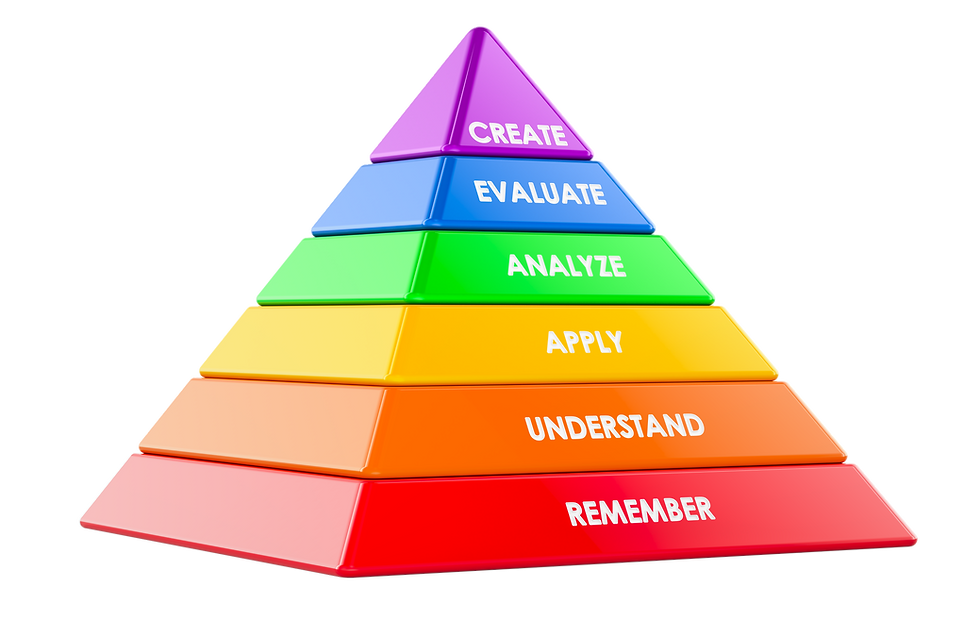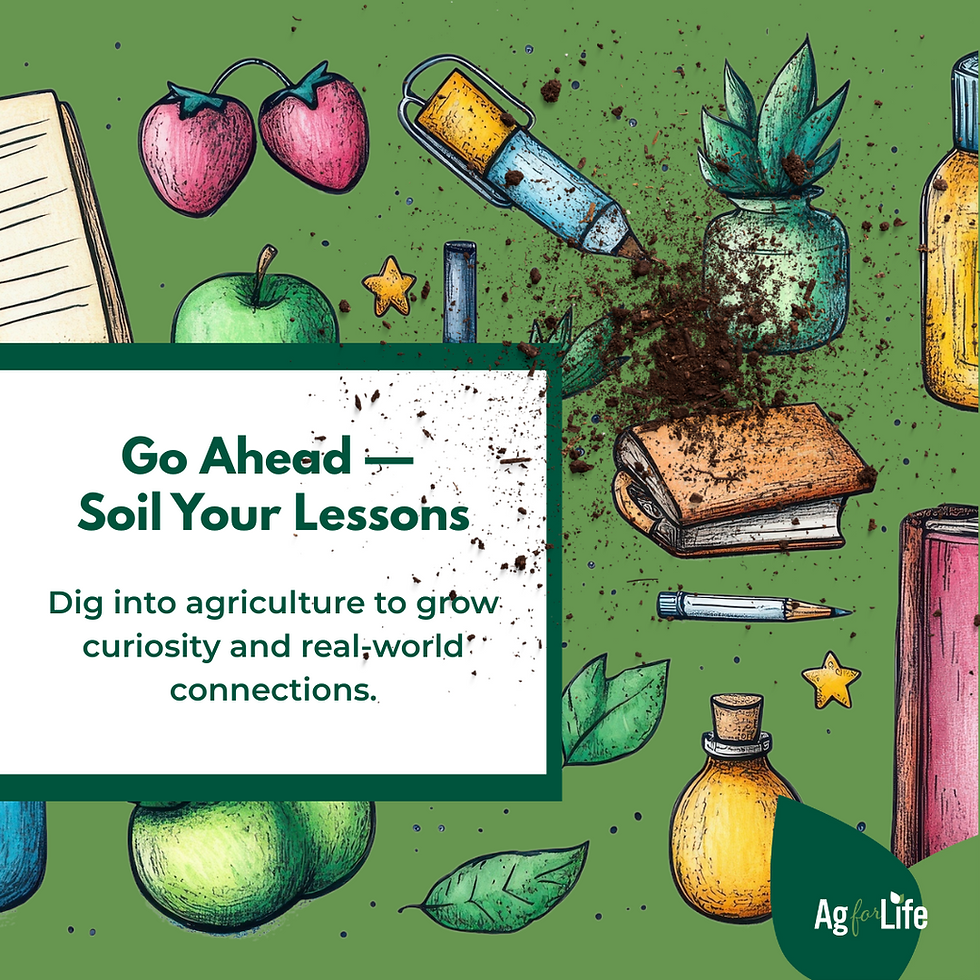Growing Deeper Learning: Using Bloom’s Taxonomy in Agriculture Education
- agforlife
- Aug 10, 2025
- 2 min read
When it comes to teaching agriculture, the possibilities for learning are endless. From food systems and sustainability to technology and careers, agriculture touches every subject area. But how can we make sure our students aren’t just memorizing facts — they’re actually thinking deeply, applying knowledge, and making real-world connections?
That’s where Bloom’s Taxonomy comes in.
Bloom’s Taxonomy is a framework that organizes learning into six levels, from foundational recall to higher-order thinking skills. In agriculture education, using these levels can help you scaffold lessons, guide questioning, and design activities that move students from knowing about agriculture to doing something with that knowledge.

Let’s walk through each level with examples you can use in your classroom.
1. Remember — The Basics
Goal: Recall facts, terms, and basic concepts.
Ag Example: Students list the major crops grown in Alberta or define terms like photosynthesis, grazing lease, or food security.
Classroom Idea: Create a “Farm Fact Flashcards” game where students match agricultural terms with definitions.
2. Understand — Making Sense
Goal: Explain ideas or concepts in their own words.
Ag Example: Students describe the farm-to-fork journey of canola and explain why pollinators are important.
Classroom Idea: Have students draw a diagram showing the stages of food production for a local product.
3. Apply — Putting Knowledge to Work
Goal: Use information in new situations.
Ag Example: Students calculate the yield of a crop given certain field sizes and growing conditions.
Classroom Idea: Challenge students to plan a school garden layout based on available space, soil type, and sunlight.
4. Analyze — Digging Deeper
Goal: Break information into parts to explore relationships and patterns.
Ag Example: Students compare different farming methods (e.g., conventional vs. organic) and discuss their environmental impacts.
Classroom Idea: Provide soil sample data from different fields and ask students to determine which crops would grow best in each.
5. Evaluate — Making Judgments
Goal: Justify decisions or opinions based on criteria.
Ag Example: Students debate the pros and cons of using pesticides, considering economic, environmental, and health perspectives.
Classroom Idea: Host a mock “Agriculture Policy Forum” where students take on roles such as farmers, scientists, and government officials.
6. Create — Growing New Ideas
Goal: Produce new or original work.
Ag Example: Students design an innovative solution to reduce food waste in their community.
Classroom Idea: Have students create a multimedia campaign encouraging their peers to buy local foods.
Why This Matters for Agriculture Education
When students move up through Bloom’s Taxonomy, they’re not just learning about agriculture — they’re developing skills that will serve them for life: critical thinking, problem-solving, creativity, and collaboration.
In today’s world, agriculture isn’t just about growing crops; it’s about solving complex challenges that impact food security, sustainability, and our global future. By using Bloom’s framework, we can help students connect agriculture to real-world issues and see themselves as active participants in shaping the future of food.
Teacher Tip: The next time you plan an agriculture lesson, ask yourself: What level of Bloom’s Taxonomy am I targeting? Then, add a question or activity that nudges students one step higher. Over time, you’ll cultivate not just agricultural knowledge — but agricultural thinkers.


